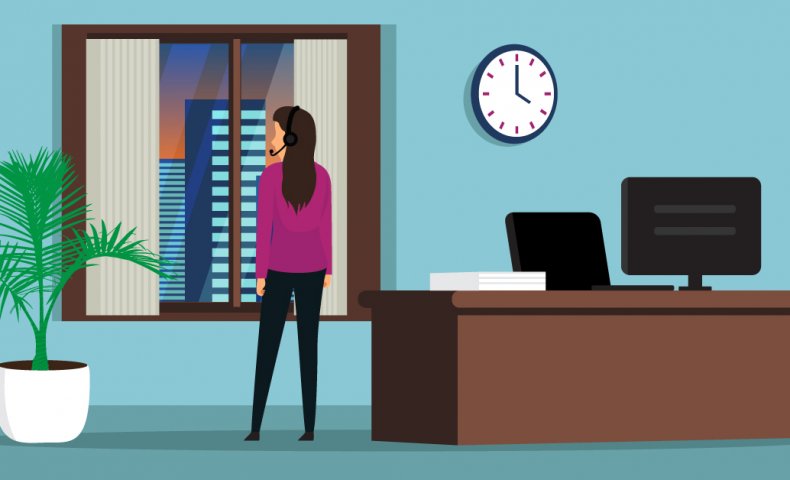
Image description: Someone stands by their office window speaking on the phone and watching the sun set. A wall clock nearby says that it is 4pm.
What is Seasonal Affective Disorder (SAD)?
SAD, which is often referred to as seasonal depression and/or the “winter blues”, is extremely common and something that some people experience every year. For many individuals, the shorter days and, in some cases, colder weather, cause a significant amount of discomfort. Here are some of the most common symptoms of SAD:
- Feeling depressed most of the time
- Losing interest in activities you typically enjoy
- Experiencing changes in appetite and/or weight
- Sleeping troubles
- Lacking energy
- Feeling hopeless or worthless
- Having difficulty concentrating
- Thinking about death and/or suicide
Sometimes it can be difficult to figure out the difference between symptoms of SAD and depression. It’s a good idea to speak with a mental health provider if you have any questions.
How can I take care of myself?
First and foremost, try to remind yourself that this has been a tough year. Everything you’re experiencing, while sometimes uncomfortable, is normal and to be expected. Remember that you are not the only one who may be struggling this winter — many people who have been diagnosed with SAD are likely having a similar experience.
The good news is there a lot of methods you can use to take care of your physical and mental health. To start, try to exercise and stay active on a regular basis and go outside (bundle up if it’s cold) so you can enjoy the fresh air and daylight. As we head into a relatively abnormal winter due to COVID-19, it may also be worth experimenting with the following ideas to find comfort and support:
- Try to manage and/or reduce your stress. This is often easier said than done, but you might find that small changes in how you approach daily stressors will make a big difference over time. This is a great opportunity to practice stress reduction, as you will likely be adapting your daily life to the changing circumstances of COVID-19.
- Be mindful of your social media use, particularly during the pandemic. As you may continue to find more down time than you have in past winters, it would make sense if some of that turned into boredom. While it might be tempting to spend your extra time on social media, it could be helpful to consider filling your time with activities that will leave you feeling refreshed and reenergized.
- Pick up a new hobby. Whether you start drawing, cooking, dancing, participating in a book club or engaging in another activity this winter, try to make sure you are setting aside your work and/or daily responsibilities to do something you enjoy.
- Stay up to date and informed about COVID-19 and other illnesses you may be exposed to this winter. This might help you feel more in control of your health and aware of the measures to take if you or someone you know becomes sick.
- Reach out for help. If you aren’t sure where to begin, click here to learn about finding the right therapist for you. Therapists on LiveHealth Online can help talk through whatever challenges you are experiencing and offer advice about next steps.
Please note: If you are in crisis or have suicidal thoughts, it’s important that you seek help immediately. Call 1-800-273-8255 (National Suicide Prevention Lifeline) or 911 if you’re having an emergency.
Recommended Posts


